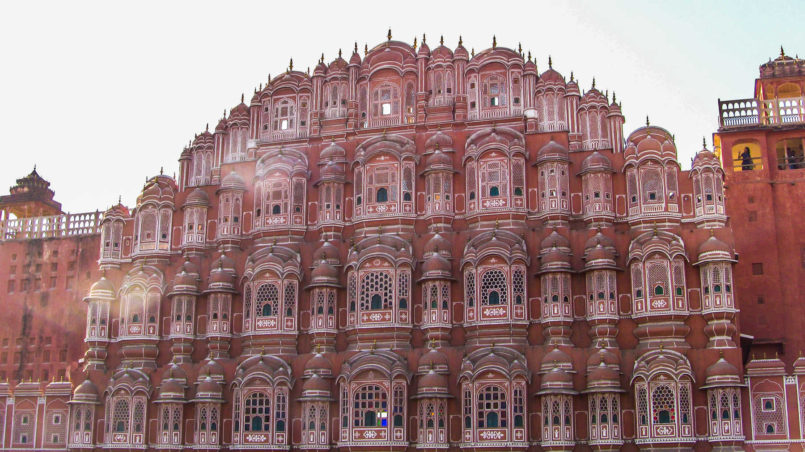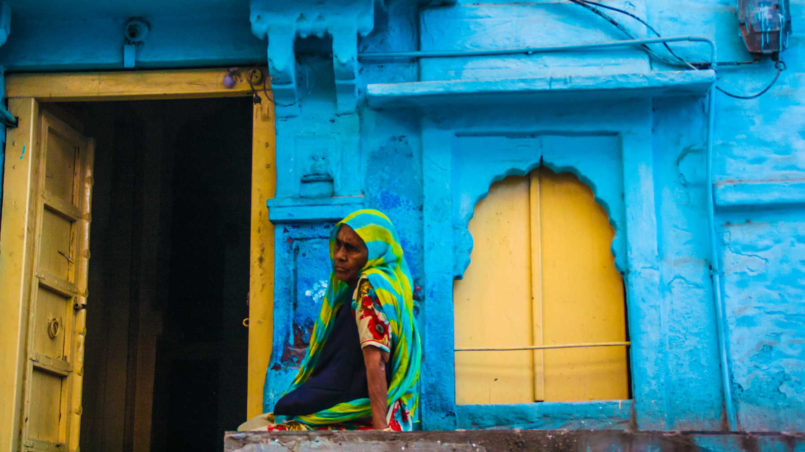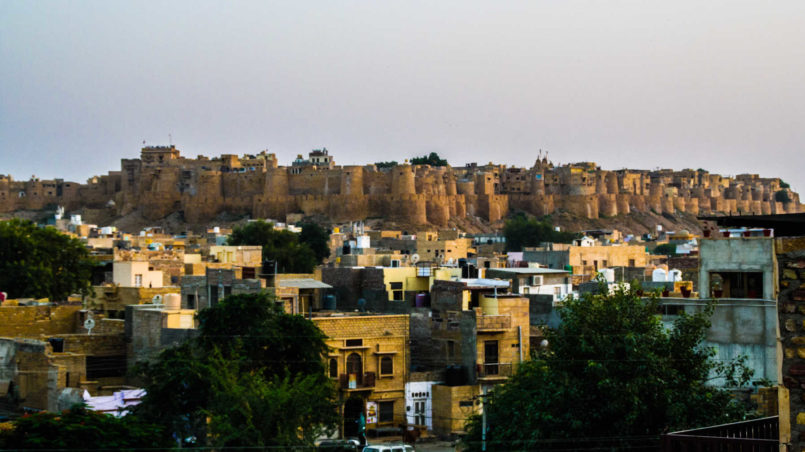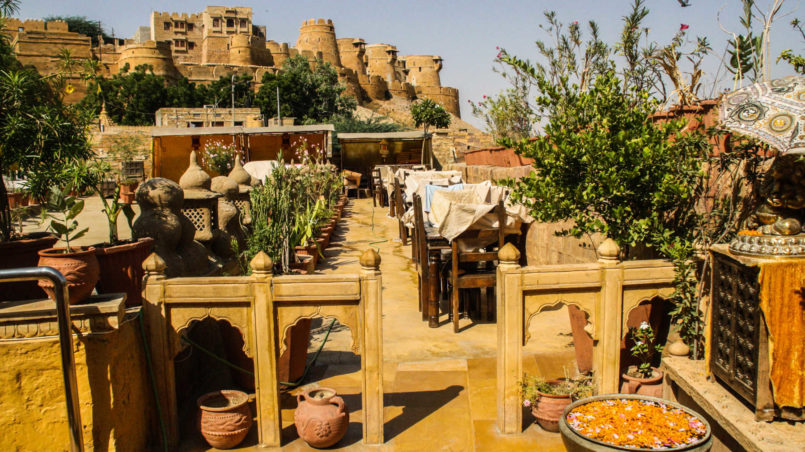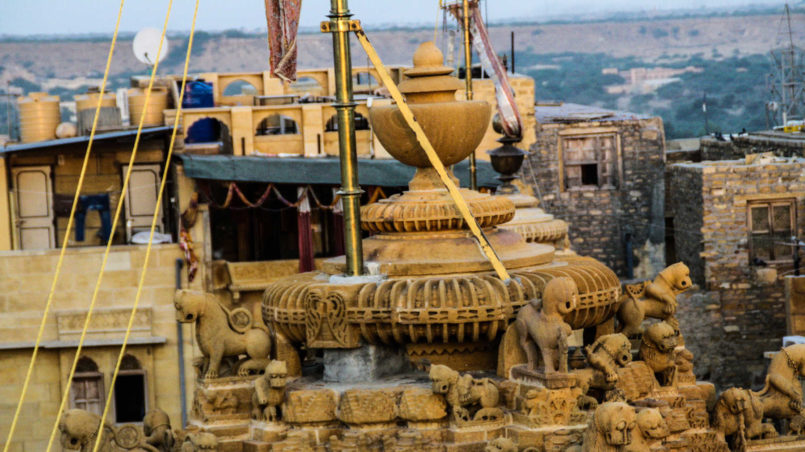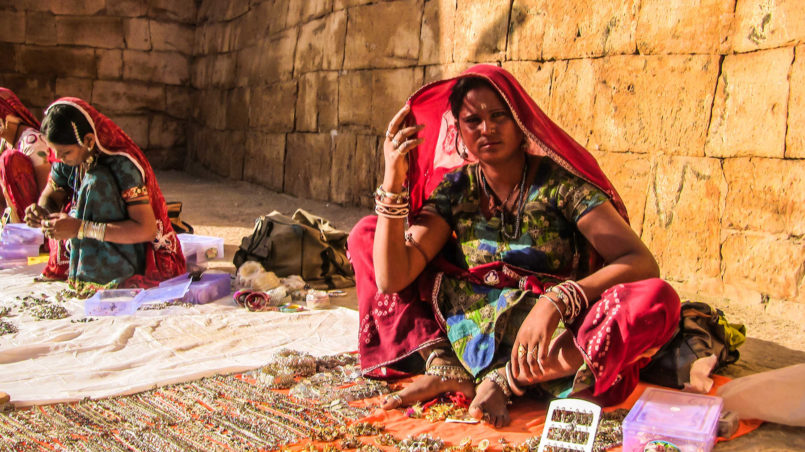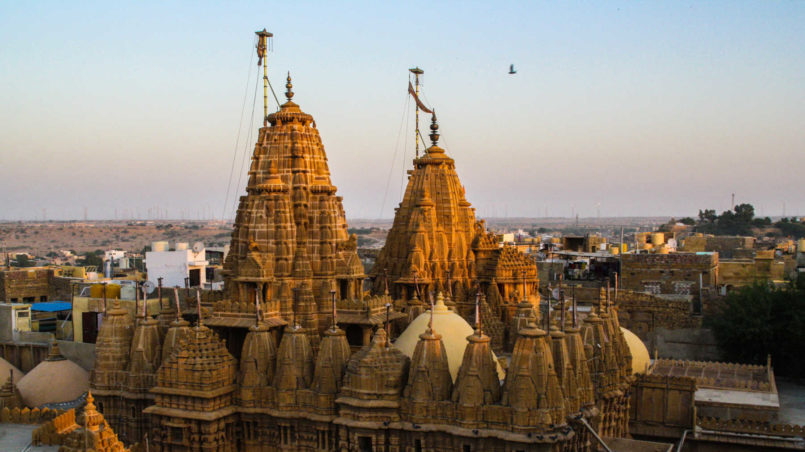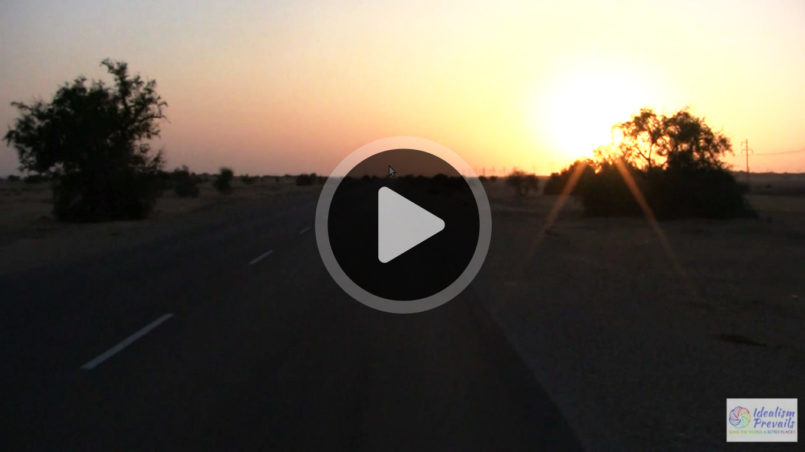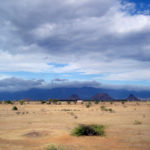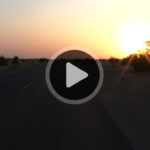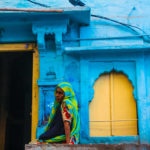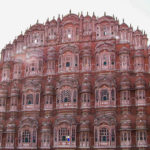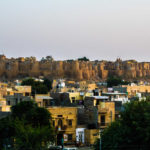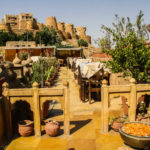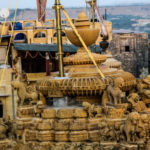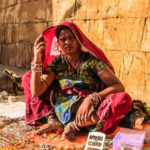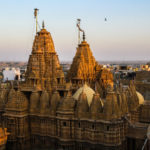Marusthali – The Desert of Living
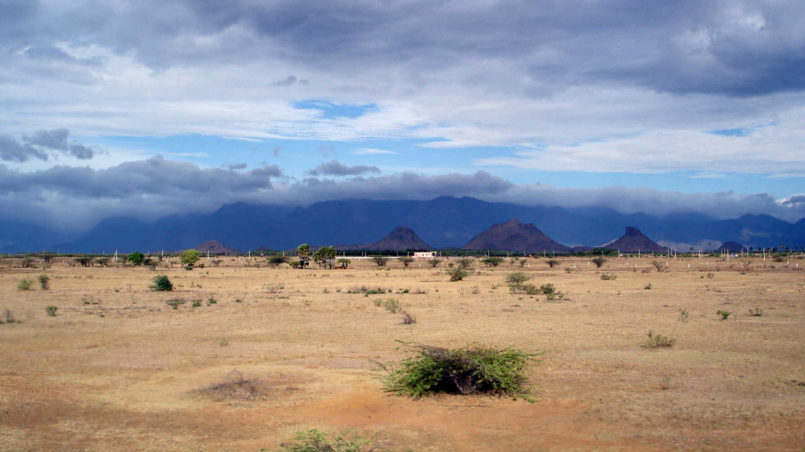
This is a story about the desert, as told by a desert dweller himself, in an exclusive interview conducted by Dr. Isabel Scharrer in Jaisalmer.
The state of Rajasthan on the extreme west of India is completely desolate and unmerciful. Rajasthan, the jewel of India, emerged after its partition from the twenty-two primitive kingdoms, known in the British era as Rajputana, “Land of Kings”. Colour distinguishes Rajasthan’s most important tourist cities.
Jaipur, the capital of Rajasthan, is also known as the “Pink City”, because of the extensive use of a reddish pink colour used in the main bazaar in the city. The old part of Jodhpur, the “Blue City”, is situated within the old walls of the city and it circles the main fort. If you visit this city, this choice of colour actually appears to cool you down due to the illusion created by the blue shades.
Jaisalmer, built from local sandstone, is termed the “Golden City”, and wooden fossils are also used in the temples and forts. Most of the fossils in their natural form can be seen at the Akal Fossil Park, which is a place that takes you beyond history. It takes you back to the prehistoric Jurassic era, 180 million years ago when the Akal Fossil Park was a forest. This area was submersed into the sea and the tree trunks were preserved in the form of fossils. Udaipur, a city in the far south of the state of Rajasthan, is mostly white in colour which is the best choice of colour to reflect the heat from the blazing sun.
Most of Rajasthan is “marusthali”, the word for desert in the Hindi language, which is the mother tongue of many people in India. The word “marusthali” is derived from Sanskrit which means “the land of the dead”. Sanskrit is one of the oldest languages in the world and is also considered to be the mother of most of the languages in the world. Even many English words are derived from the Sanskrit language.
But Jaisalmer, located in the extreme part of western Rajasthan, belongs to the great Indian Thar desert, which extends over an area of 62,000 square km. Jaisalmer, in Rajasthan, is simply unmatched. It breaks all the rules of desert life. This part of the Thar desert has been conquered by humans since ancient times.
More than 13 million people currently live here. It was established by King Rawal Jaisal in approximately 1156 AD. He used to have his capital city 16 km away from Jaisalmer. This part of the desert was the link between India and Persia, Egypt, Africa and the West. One day King Rawal Jaisal climbed up the only hill, the “Trikut hill” which is 750 metres higher than the surrounding area. This hill provides a perfect location from which to keep a vigilant eye over the surrounding area.
King Rawal Jaisal met a hermit named Eesaal, who told him to build his fort on this high land, on the order of Lord Krishna. Since King Rawal Jaisal was a descendent of Lord Krishna, he agreed. This decision of King Rawal Jaisal turned out to be a very good decision, as later it became the famous Silk Road. The splendid Jaisalmer Fort stands proudly on its land and tells the stories of the valour and splendour of the Rajput rulers.
The otherwise barren land of Jaisalmer comes alive once every year during winter. It is the time when the festivities of the Desert Festival are held. During this festival in Jaisalmer, the city displays the wealth of its culture and traditions to the rest of the world.
Most of the people working near or in the fort complex itself are from nearby villages who have been working there for generations. In this article, we will talk about life in the desert and will try to understand the lifestyle and culture of those who live there. About 35 km away, towards the west, near the India-Pakistan border, there is an isolated village and, like many others, Amir also made his fortune at the fort when he was 16 year old.
Amir is the name of this 22 year old man. He came with the help of his uncle to work around the fort. He told us about himself and his family, and shared with us how difficult it is to even survive in this part of the country. Both Hindu and Muslim families live together in harmony in the village. He also explained to us how people in the desert treat themselves when they are sick. He explained that for children it is difficult to go to school as they are usually located far away. He also told us of many other hurdles that one has to face in the desert on an everyday basis.
Let’s watch the untold story of desert life as narrated by Amir himself:

